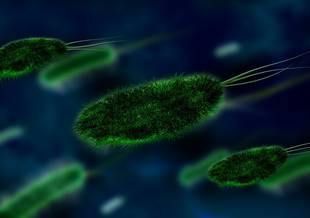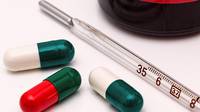
We compulsively wash our hands, spray our countertops and grimace when someone sneezes near us. In fact, we do everything we can to avoid unnecessary encounters with the germ world. But the truth is we are practically walking petri dishes, rife with bacterial colonies from our skin to the deepest recesses of our guts.
All the bacteria living inside you would fill a half-gallon jug; there are 10 times more bacterial cells in your body than human cells, according to Carolyn Bohach, a microbiologist at the University of Idaho (U.I.), along with other estimates from scientific studies. (Despite their vast numbers, bacteria don't take up that much space because bacteria are far smaller than human cells.) Although that sounds pretty gross, it's actually a very good thing.
The infestation begins at birth: Babies ingest mouthfuls of bacteria during birthing and pick up plenty more from their mother's skin and milk—during breast-feeding, the mammary glands become colonized with bacteria. "Our interaction with our mother is the biggest burst of microbes that we get," says Gary Huffnagle, a microbiologist and internist at the University of Michigan at Ann Arbor. And that's just for starters: Throughout our lives, we consume bacteria in our food and water "and who knows where else," Huffnagle says.
It may be startling, but according to the Howard Hughes Medical Institute (HHMI) of Maryland, we each house two to five pounds (1.0 to 2.26 kilograms) of live bacteria inside our bodies. That runs into hundreds of millions and billions of microscopic organisms.
Bacteria come in good and bad varieties, or more to the point, can be helpful or harmful. While the vast amount of attention is given to bad bacteria because of their potential for creating illness, humans share a necessary symbolic relationship with many types of helpful bacteria. Some are crucial to our very survival.
HHMI reports that the largest concentration of bacteria in the human body is found in the intestines. Species numbering in the thousands create trillions of silent passengers functioning en masse. The relationship between the different strains of bacteria and the human body is a dynamic one, constantly adjusting to changing conditions.
Probiotics, or the study of treatment through helpful bacteria, is gaining more attention as infections increase from overuse of antibiotics. One familiar example of probiotics is the promotion of yogurt containing live bacterial cultures for easing diarrhea associated with antibiotics. The helpful bacteria in this case are of the Lactobacili strain. Though it is clear through research that helpful bacteria can have a positive effect, as a treatment regimen, their effectiveness is less than sufficient to replace antibiotics, given our current state of knowledge. However, the medical community believes a replacement is exactly what's needed.


















